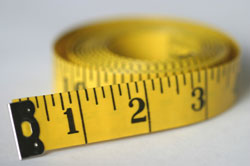We still live in an engineering environment where the use of AWG standard cables are prevalent mainly due to the fact that just like the US $, the American UL (United Laboratories) system is dominant world wide and generally more accepted globally than the British standards.
(UL is a bit like our BS standard but is specifically governed and registered in the US. So, for example, say you are a manufacturer of wire: you send it off to UL, they test it, and approve it, and provide a E-Number, which means the manufacturer holds the rights to that standard a bit like intellectual property.)
In the cable assembly business you learn your conversion tables off by heart much like your ABC, and times tables.
Whether or not you like the idea of working in the Imperial System it is with us to stay, so to make things easy I have listed a simple conversion guide.
| Metric MM2 (Diameter) | AWG | Approx Strading |
| 0.45mm | 24 awg | 7/0.2 |
| 0.5mm | 22 awg | 16/0.2 |
| 0.75mm | 20 awg | 24/0.2 |
| 1mm | 18 awg | 32/0.2 |
| 1.5mm | 16 awg | 30/0.25 |
| 2.5mm | 14 awg | 50/0.25 |
| 4mm | 12 awg | 56/0.3 |
| 6mm | 10 awg | 84/0.3 |
| 10mm | 8 awg | 80/0.4 |
| 16mm | 6 awg | 126/0.4 |
| 25mm | 4 awg | 196/0.4 |
The above table is not an exact science as you can’t exactly convert imperial to metric, however, you get the idea. The other caveat is the above table is based on stranded cable (the vast majority of cables are made up of stranded conductors). The conversion for solid cores, however, involves differed figures (I have not listed them since most people don’t use solid cores).
Still confused? Don’t worry you are not alone. When I speak to people about what cables are best to use there are really only three things that matter. These are:
- Voltage and current capacity
- Connector / Crimp wire size specification
- Temperature rating
If you think this has been useful then please let us know. I hope that you can put this simple guide to good use.

